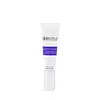What's inside
What's inside
 Key Ingredients
Key Ingredients

 Benefits
Benefits

 Concerns
Concerns

No concerns
 Ingredients Side-by-side
Ingredients Side-by-side

Water
Skin ConditioningEthoxydiglycol
HumectantSodium Polyacrylate
AbsorbentMagnolia Grandiflora Bark Extract
AntimicrobialLeucojum Aestivum Bulb Extract
Skin ProtectingMalachite
Skin ConditioningPanthenol
Skin ConditioningGlycerin
HumectantPichia Heedii Extract
Skin ProtectingSorbitol
HumectantResveratrol
AntioxidantDextran
Aloe Barbadensis Leaf Juice
Skin ConditioningOlea Europaea Leaf
Skin ConditioningMoringa Oleifera Seed Extract
Skin ConditioningPropylene Glycol
HumectantCaprylyl Glycol
EmollientAlgae
Skin ConditioningCaprooyl Tetrapeptide-3
Skin ProtectingCaprylhydroxamic Acid
Plankton Extract
Skin ConditioningButylene Glycol
HumectantTocopherol
AntioxidantDipeptide Diaminobutyroyl Benzylamide Diacetate
Skin ConditioningBenzyl Hydroxybutyramide
EmollientPEG-40 Hydrogenated Castor Oil
EmulsifyingDuboisia Leichhardtii Leaf Extract
Skin ConditioningAesculus Hippocastanum Seed Extract
Skin ConditioningArginine Ferulate
Skin ConditioningTetrahydropiperine
Skin ConditioningRetinyl Palmitate
Skin ConditioningLinseed Acid
CleansingCucumis Sativus Fruit
Skin ConditioningCalcium Disodium EDTA
Helianthus Annuus Seed Oil
EmollientBHT
AntioxidantWater, Ethoxydiglycol, Sodium Polyacrylate, Magnolia Grandiflora Bark Extract, Leucojum Aestivum Bulb Extract, Malachite, Panthenol, Glycerin, Pichia Heedii Extract, Sorbitol, Resveratrol, Dextran, Aloe Barbadensis Leaf Juice, Olea Europaea Leaf, Moringa Oleifera Seed Extract, Propylene Glycol, Caprylyl Glycol, Algae, Caprooyl Tetrapeptide-3, Caprylhydroxamic Acid, Plankton Extract, Butylene Glycol, Tocopherol, Dipeptide Diaminobutyroyl Benzylamide Diacetate, Benzyl Hydroxybutyramide, PEG-40 Hydrogenated Castor Oil, Duboisia Leichhardtii Leaf Extract, Aesculus Hippocastanum Seed Extract, Arginine Ferulate, Tetrahydropiperine, Retinyl Palmitate, Linseed Acid, Cucumis Sativus Fruit, Calcium Disodium EDTA, Helianthus Annuus Seed Oil, BHT
Ingredients Explained
These ingredients are found in both products.
Ingredients higher up in an ingredient list are typically present in a larger amount.
Butylene Glycol (or BG) is used within cosmetic products for a few different reasons:
Overall, Butylene Glycol is a safe and well-rounded ingredient that works well with other ingredients.
Though this ingredient works well with most skin types, some people with sensitive skin may experience a reaction such as allergic rashes, closed comedones, or itchiness.
Learn more about Butylene GlycolGlycerin is already naturally found in your skin. It helps moisturize and protect your skin.
A study from 2016 found glycerin to be more effective as a humectant than AHAs and hyaluronic acid.
As a humectant, it helps the skin stay hydrated by pulling moisture to your skin. The low molecular weight of glycerin allows it to pull moisture into the deeper layers of your skin.
Hydrated skin improves your skin barrier; Your skin barrier helps protect against irritants and bacteria.
Glycerin has also been found to have antimicrobial and antiviral properties. Due to these properties, glycerin is often used in wound and burn treatments.
In cosmetics, glycerin is usually derived from plants such as soybean or palm. However, it can also be sourced from animals, such as tallow or animal fat.
This ingredient is organic, colorless, odorless, and non-toxic.
Glycerin is the name for this ingredient in American English. British English uses Glycerol/Glycerine.
Learn more about GlycerinPanthenol is a common ingredient that helps hydrate and soothe the skin. It is found naturally in our skin and hair.
There are two forms of panthenol: D and L.
D-panthenol is also known as dexpanthenol. Most cosmetics use dexpanthenol or a mixture of D and L-panthenol.
Panthenol is famous due to its ability to go deeper into the skin's layers. Using this ingredient has numerous pros (and no cons):
Like hyaluronic acid, panthenol is a humectant. Humectants are able to bind and hold large amounts of water to keep skin hydrated.
This ingredient works well for wound healing. It works by increasing tissue in the wound and helps close open wounds.
Once oxidized, panthenol converts to pantothenic acid. Panthothenic acid is found in all living cells.
This ingredient is also referred to as pro-vitamin B5.
Learn more about Panthenol